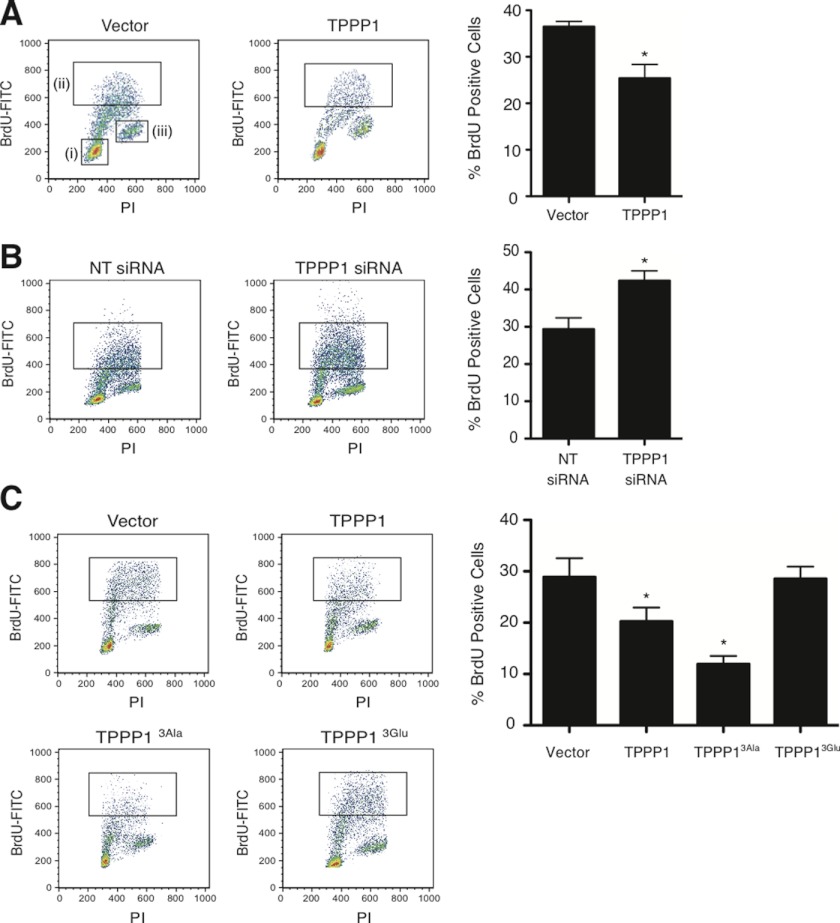FIGURE 2.
TPPP1 and the ROCK-TPPP1 signaling pathway regulate the G1/S-phase cell cycle transition. Altered TPPP1 levels modulate the G1/S-phase transition. A, U2OS cell lines stably expressing FLAG-TPPP1 or vector were incubated with 1 μg/ml of 5-bromo-2-deoxyuridine (BrdU) for 3 h followed by fixation in 70% ethanol. Fixed cells stained with mouse anti-BrdU-FITC or mouse anti-IgGκ FITC (isotype control) antibodies and PI were analyzed by flow cytometry. Inset i represents the low PI positive, G1-phase cell population; inset ii is the BrdU and PI positive population, that represents cells that were in S-phase during the incubation period; and inset iii represents the high PI, G2/M-phase population. Graphical representation of the (ii) gated population (*, p = 0.0252) (right panel). B, representative dot plots of U2OS cells transiently transfected with TPPP1 or non-targeting (NT) siRNA that were analyzed as in A as a graphical representation of the data (*, p = 0.0322) (right panel). C, ROCK phosphorylation of TPPP1 relieves its inhibition of the G1/S-phase transition. Representative dot plots of stable U2OS cells expressing wild-type TPPP1, TPPP13Ala, TPPP13Glu, or vector. Graphical representation of experiments as described in A of the (ii) gated cell population (*, p = 0.0476; **, p = 0.0134). Data are expressed as mean ± S.E. of three independent experiments and analyzed by two-tailed unpaired t tests.

